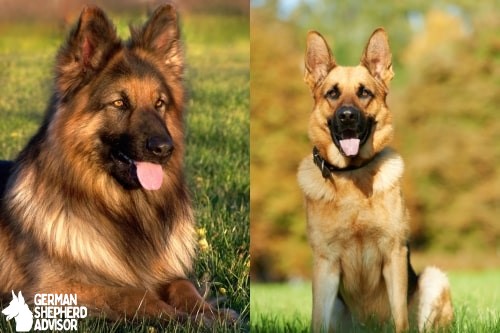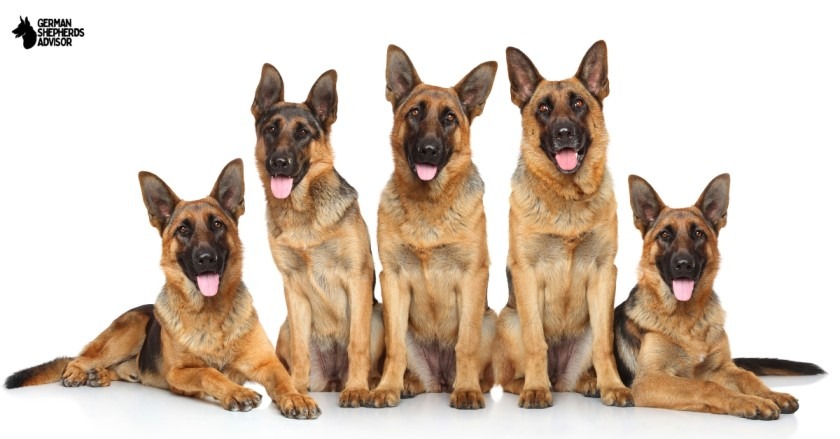German Shepherd is one of the most popular and versatile dog breeds in the world. With a reputation for their intelligence, loyalty, and work ethic, these pups are versatile performers, filling family companion roles and working-mutt jobs as well, including police and military canines. But little did you know that the characteristics of a German Shepherd can differ quite drastically depending on the type of bloodline.
Bloodlines are also breed accordingly, affecting a dog temperament, health and performance. Whether you are looking for a working dog, a show dog, or just a loyal family pet, understanding German Shepherd bloodlines will help you make the right choice. In this blog post, we will be discussing the best German Shepherd bloodlines and their unique characteristics.

Understanding German Shepherd bloodlines
Bloodline: The lineage of a dog, which showcases its ancestry and genetic history. Bloodlines in German Shepherds dictate all sorts of characteristics, including their drive, endurance, looks, and even personality. German Shepherd bloodlines are broadly categorized as either working lines or show lines.
- Working lines: Bred for physical and mental capabilities, these dogs shine in demanding tasks, such as search-and-rescue, tracking and protection work.
- Show lines: These dogs are bred for their looks and temperament, usually showcased in competitive events.
Best German Shepherd working bloodlines
So let’s dig a little deeper into the most notable bloodlines in each category.
Czech Working line
The Czech Working Line was developed in the former Czechoslovakia. These dogs are exceptional drivers, enduro runners and polyvalent dogs. They are a great police and military dog, but can even be a family protector with their strong work ethic and good temper.
Key traits:
- High energy and stamina.
- Excellent focus and determination.
- Ideal for advanced training and active roles.
West German working line
Hailing from Germany, the West German Working Line is one of the most balanced bloodlines. These dogs combine intelligence, work ethic, and a stable temperament, making them suitable for various roles, including as family pets.
Key traits:
- Strong loyalty and trainability.
- Moderate energy levels, suitable for both work and companionship.
- Excellent health and longevity.
East German DDR line
The DDR Line was conceived in East Germany during the Cold War and is known for its ruggedness and endurance. These dogs were originally developed for border patrol and other intense jobs.
Key traits:
- Strong, athletic physique.
- High focus and determination.
- Excellent for tracking / protective work.

Best German Shepherd show bloodlines
West German Show line
The West German Show Line is the most recognized, and in many cases the “ideal” look of the breed is highly regarded. These animals are bred to be gorgeous and graceful, with deep colored coats and a high-stepping trot.
Key traits:
- Calm and friendly temperament.
- Ideal for families and dog shows.
- Requires moderate exercise and stimulation.
American show line
This type, bred in the United States, has a more angulated back and an easygoing temperament. Although they aren’t as suited for work, like some other bloodlines, these dogs are great for companionship.
Key traits:
- Distinctive physical structure.
- Great for families seeking a low-energy pet.
- Suited for obedience training and basic tasks.

How to choose the right bloodline?
Choosing the right bloodline of German shepherd really comes down to your needs and lifestyle.
Below are a few things to take into account:
- Purpose: Working dog, show dog, family pet?
- Exercise needs and activity level: Working lines need more workout and mental stimulation, show traces are more laid-back.
- Temperament and behaviour: Some bloodlines lend themselves to living with children, and some do better as working dogs in high-demand situations.
- Health considerations: Always prioritise breeders who test for health markers and can supply pedigree certificates.
Common myths about German Shepherd bloodlines
There are several misconceptions about German Shepherd bloodlines that need to be addressed:
- Myth: Show lines work less or are less capable of working.
- Fact: Working lines may have more drive, but show lines can also be trained for basic tasks and obedience.
- Myth: All working lines are aggressive.
- Fact: Temperament depends on training and socialization, not just genetics.
In short, knowing these differences will help you better decide what to do.

Caring for a German Shepherd based on its bloodline
Every bloodline has its own needs.
Here’s how to care for your German Shepherd depending on its lineage:
- Training: Working lines may benefit from advanced training to deal with their energy, but show lines may do a little less obedience training.
- Exercise: Ensuring adequate physical exercise to combat boredom – this is especially true for higher-energy working lines.
- Health: Regular visits to the vet and a well-balanced diet are key to avoiding genetic issues that may arise in certain bloodlines.
How can I identify a reputable breeder?
Look for breeders who:
- Provide health certifications and pedigrees.
- Allow you to meet the puppy’s parents.
- Have positive reviews and references.
- Follow ethical breeding practices and avoid overbreeding.
- Check our guide on how to find a reputable dog breeder?
Are German Shepherds from working lines more aggressive?
Not inherently. Aggression is influenced by training, socialization, and environment rather than just genetics. Working lines may have more protective instincts, which need proper channeling through training.
What health issues should I be aware of in German Shepherd bloodlines?
Common health concerns include:
- Hip and elbow dysplasia.
- Degenerative myelopathy.
- Bloat (gastric torsion).
Working with a reputable breeder can minimize these risks.

How do I know which bloodline suits my needs?
Consider your lifestyle and purpose:
- For active roles like police or military work: Czech Working Line or DDR Line.
- Balanced roles, including family life and work: West German Working Line.
- For companionship or dog shows: West German Show Line or American Show Line.
How much do German Shepherds from top bloodlines cost?
Prices vary based on the breeder, bloodline, and location. Dogs from prestigious bloodlines can range from $1,500 to $5,000 or more, especially for puppies with health certifications and show potential.
Where can I find more information about German Shepherd bloodlines?
- Consult German Shepherd clubs and associations.
- Read books or guides about the breed.
- Talk to experienced breeders and owners to get personalized advice.
What’s the difference between working lines and show lines?
Working lines: Bred for tasks like police work, search-and-rescue, and guarding. They have high energy, endurance, and drive.
Show lines: Bred for appearance and temperament, focusing on elegance and conformation standards. They are often calmer and suited for families or competitive shows.

Conclusion
“The German Shepherd bloodline contributes enormously to what that dog’s attributes are going to be, whether it’s a working dog, show dog, or companion dog,” he said. The Czech Working Line is high energy, while the West German Show Line is more refined, and each bloodline possesses characteristics that best suit varying needs.
When selecting a German Shepherd, it’s important to correlate the dog’s characteristics with the owner’s lifestyle and mission. Always deal with reputable breeders who care about health and practicing good breeding.
Did you run across German Shepherds from a specific lineage? We’d love to hear your stories and tips in the comments!
Frequently asked questions (FAQs)
A German Shepherd bloodline refers to the lineage or ancestry of the dog. It determines the dog’s genetic traits, including temperament, appearance, and abilities. Bloodlines are often categorized into working lines and show lines.
The West German Show Line is typically best for families due to its calm and friendly temperament. The American Show Line is another good option for those seeking a gentle companion.
Yes, but they require significant training, exercise, and mental stimulation. Bloodlines like the West German Working Line strike a balance between work drive and family compatibility.
Working lines, particularly the Czech Working Line and West German Working Line, tend to have fewer health issues compared to show lines. This is because they are bred for performance and not just appearance.
No, intelligence levels vary among individual dogs, not necessarily between working and show lines. However, working lines often display higher drive and focus, which can make them appear more task-oriented.
The West German Show Line or the American Show Line is generally better for first-time owners due to their manageable energy levels and friendly temperament.
Yes, mixed-bloodline German Shepherds can inherit a combination of traits from both parents, potentially offering a balanced temperament and versatility. However, understanding the specific lineage helps anticipate behavior and health traits.
Yes, working lines are typically more driven and require consistent, advanced training, while show lines are easier to train for basic obedience but may lack the same work drive.

